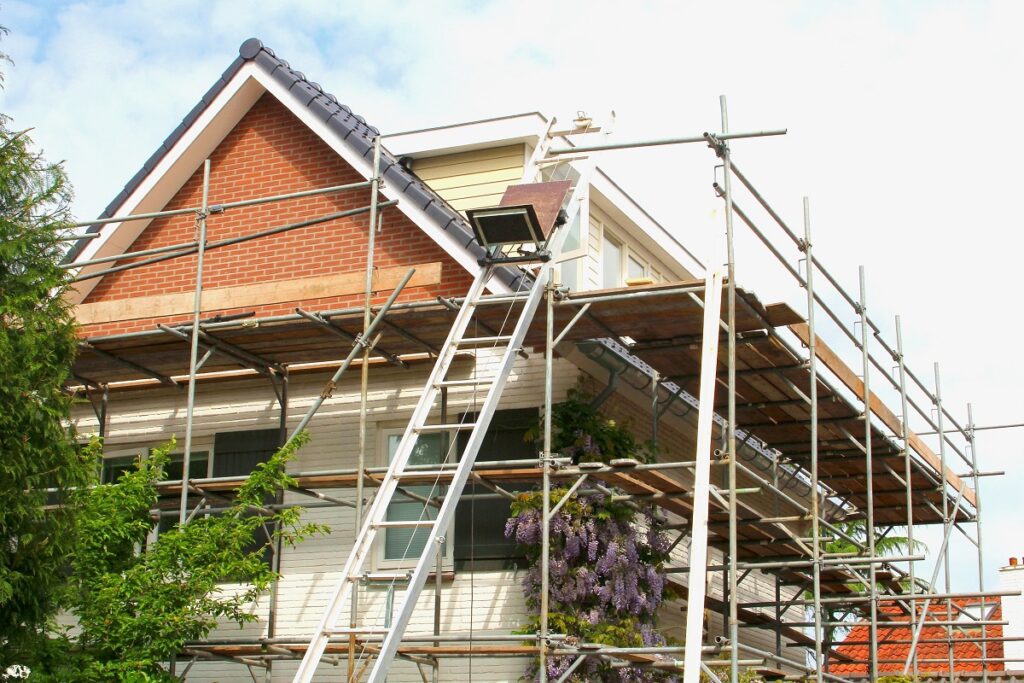- Planning, inspecting, and budgeting critically underlie the renovation of a fixer-upper into a dream home.
- Professional inspections provide objective evaluations, highlighting safety concerns and essential system checks.
- A realistic budget with a contingency fund and expense tracking ensures financial stability during renovation.
- Incorporating energy efficiency and smart home technology can cut bills, provide tax benefits, and increase home value.
- DIY vs. hiring professional help depends on expertise level and potential cost savings.
Buying a fixer-upper can be a great way to own your dream home without breaking the bank. However, renovation can be daunting, especially if you lack experience in home improvement.
Renovating a fixer-upper can be a challenging process, but it can also be gratifying. If you’re considering taking on a fixer-upper project, here are some tips to help you spruce up your fixer-upper.
Start with a Plan
Before you begin any work, it’s crucial to have a clear and comprehensive plan in place. Take a walk through your home and make a list of the repairs that need to be done, as well as the areas you’d like to improve.

Structural Issues
Prioritize your list by tackling critical structural issues first and moving on to cosmetic upgrades later. Sketch out the floor plan of each room, and think about what specific changes you’d like to make. A detailed plan will help you stay organized, save time, and make more informed decisions.
Enhance the Home Interior
You should also plan the enhancements in the home’s interior. Consider what walls you want to move, if any, to create more open space and flow. Think about the types of flooring and fixtures you would like to install. You can also enhance the home with hand-crafted embellishments from Dogberry Collections. The collection offers a variety of rustic and modern home accents, such as wooden shelves, mantels, and doors that can add character and charm to your fixer-upper. Planning these details will help you stay within budget and avoid costly mistakes.
Get a Professional Inspection
Before you start any remodeling work, hire a professional inspector to thoroughly assess the state of your home. They will comprehensively check for structural damage, water damage, mold, and pests. The inspector’s report will help you identify the most critical repairs and clearly show what needs immediate attention.
Benefits of a Professional Inspection
A professional inspection provides a detailed and impartial evaluation of the home’s condition. An experienced inspector can spot issues that may be obscure to the untrained eye. They can identify potential safety hazards, such as electrical problems or a faulty heating system, which could be costly if not addressed promptly. The inspection will also include assessing major systems like the plumbing and HVAC to ensure they function correctly.
Inspection Report
Once the inspection is completed, you’ll receive a comprehensive report outlining all the findings. This report will include photographs, descriptions, and recommendations for handling the identified issues. It will be a valuable guide as you plan your renovation, helping you prioritize repairs and improvements.
Be Realistic with Your Budget
Renovating a fixer-upper can be more expensive than you might think. You need to be realistic about your budget while planning for the remodeling work. Start by determining how much you can afford to spend on the repairs and upgrades. Be sure to factor in the cost of materials, labor, and potential delays. A well-planned budget will keep you from overspending and help you prioritize renovations.
Contingency Fund
While setting your budget, it’s essential to set aside a contingency fund. Unexpected costs often arise during the renovation, such as unforeseen structural issues or the need for additional materials. You should allocate 10-20% of your estimated budget to handle these unexpected expenses. This safety net can prevent financial stress and keep your renovation project on track.
Regular Tracking of Expenses
Keep a close eye on your expenses throughout the renovation process. Regularly tracking your spending against your budget can help you make the necessary adjustments if costs run higher than expected. There are plenty of budgeting tools and apps available that can assist with this.
DIY or Hire a Professional
Determine what work you’re comfortable taking on yourself. While some projects may be easy enough to DIY, others require professional help from licensed contractors. Know your limits and only take on what you can handle.
Expertise Level
Think about your level of expertise and consider the cost and time-saving advantages of hiring a professional. Remember that DIY projects can be rewarding, but not all tasks are simple. Mistakes can be costly, so knowing when to call in the experts is essential.

Prioritize Energy Efficiency
Renovating can also be an opportunity to increase the energy efficiency of your home. Adding insulation, double-paned windows, and energy-efficient appliances can reduce your energy usage and cut bills. Additionally, you may be eligible for green energy-based tax credits and incentives. Incorporating energy efficiency into your renovation plans can save you money in the long run and make your home more desirable to potential buyers.
Smart Home Technology
Consider integrating smart home technology into your renovation plans. This can include devices like programmable thermostats, smart lighting, and energy monitoring systems. These upgrades add convenience and help reduce energy consumption and costs.
Renovating a fixer-upper can be a challenging and rewarding process. With preparation, realistic budgeting, and a well-planned approach, you can turn your fixer-upper into your dream home. The journey requires careful consideration and patience, but the results can be worth the effort. So, consider these tips before you start renovating your fixer-upper, and you’ll be on your way to transforming your house into a comfortable and inviting home.

